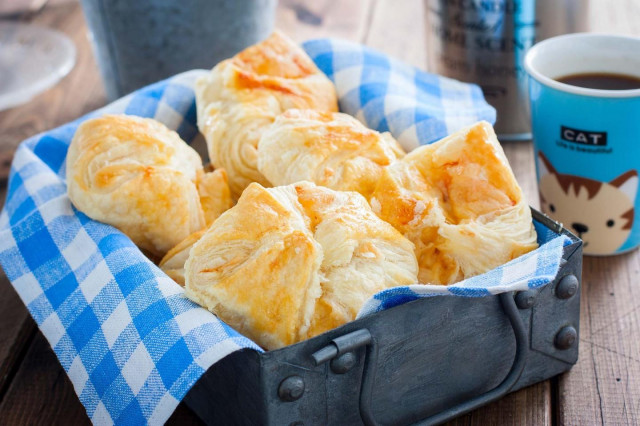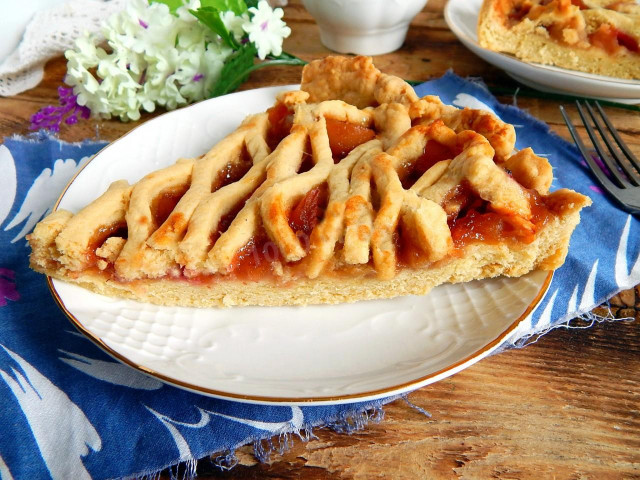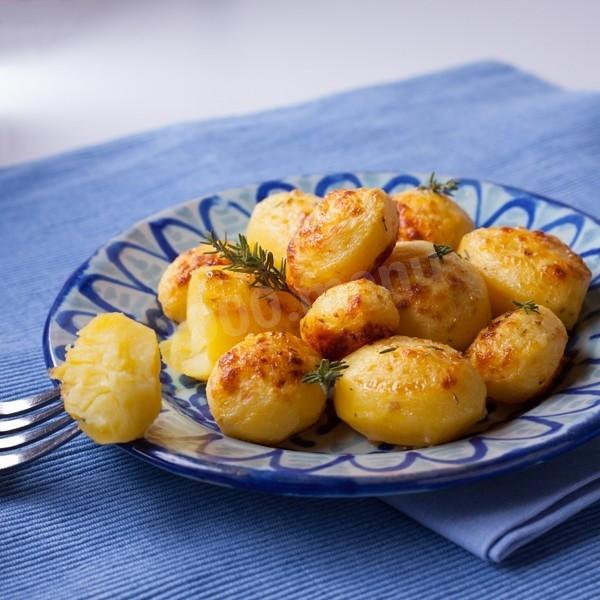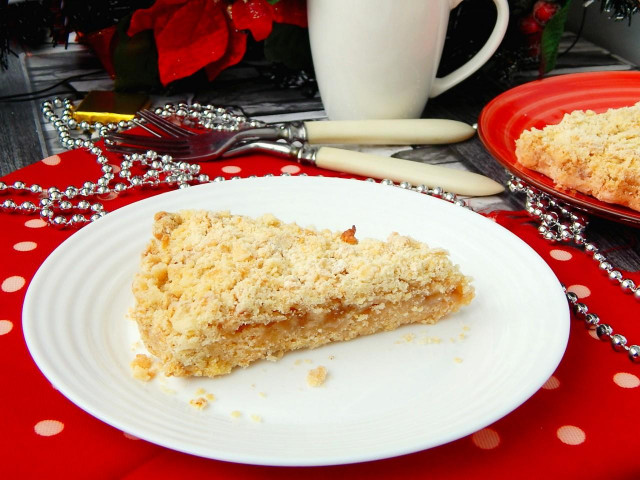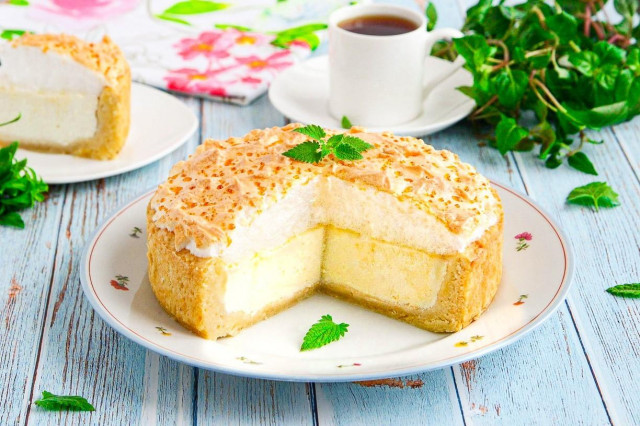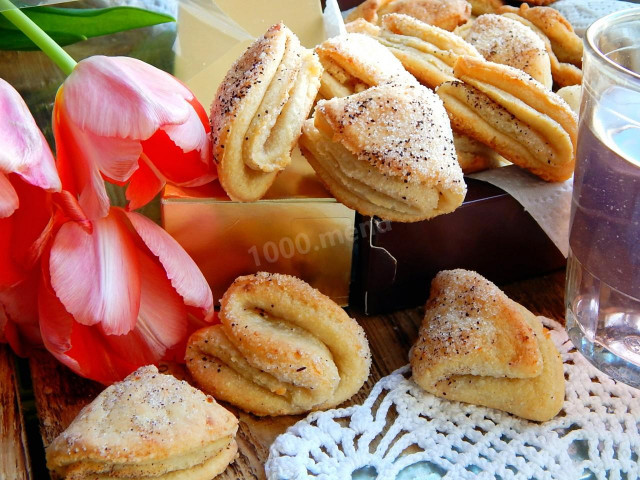Composition / ingredients
Step-by-step cooking
Step 1:
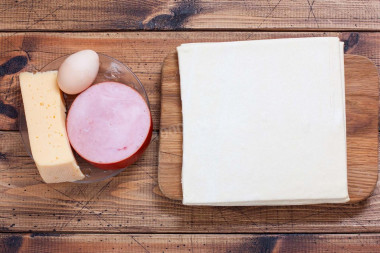
Prepare the necessary products for making envelopes with ham and cheese. You can take any cheese, but if you want it to melt better, then you should take cheese with a fat content of 50%. Egg for greasing envelopes. My dough consists of two squares. Take the dough out of the freezer in advance, remove it from the package and leave it for a few minutes at room temperature, then separate the plates from each other and leave for another 1.5 hours.
Step 2:
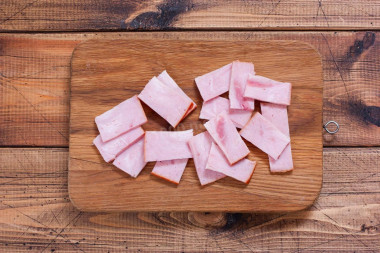
Release the ham you have chosen from the packaging, remove the films. Cut into plates. The amount of ham and cheese in this recipe is, of course, for reference. The homemade preparation of such envelopes differs from the store ones in that we decide for ourselves how much filling we will have.
Step 3:
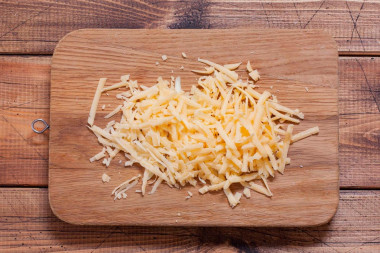
Remove the selected cheese from the package and grate it on a coarse grater.
Step 4:

Put the thawed dough on a flat surface, cut each layer into four squares (parts). It is better to use all the dough from the package, since it cannot be re-frozen. To make the finished puffs more lush, it is better not to roll out the dough, and if necessary, only slightly stretch it with your hands.
Step 5:
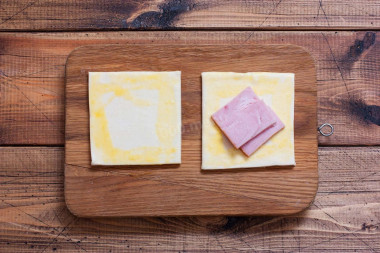
Break the egg into a separate bowl and beat lightly. Lubricate each square with egg at the edges for better gluing. In the middle of each square, put ham, one or two pieces or as many as you want.
Step 6:
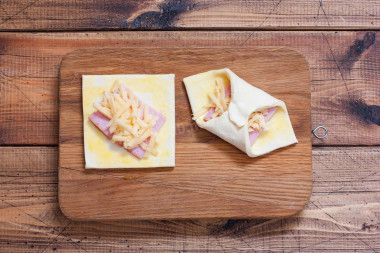
Sprinkle grated cheese on top of the ham. Add cheese, too, to your liking. There are two ways to fold envelopes. One is when the opposite edges are bent on only one side. It turns out like an open envelope, the filling will be visible here, and if there is a lot of it, it can leak out.
Step 7:
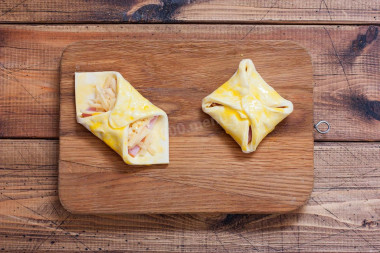
And the second way is when all the edges are fixed together. In this case, the filling is not very visible and will remain inside if you firmly fasten the edges together. Grease each envelope with egg and put it on a baking sheet covered with baking paper. Put the baking sheet in a preheated 200 gr. oven.
Step 8:
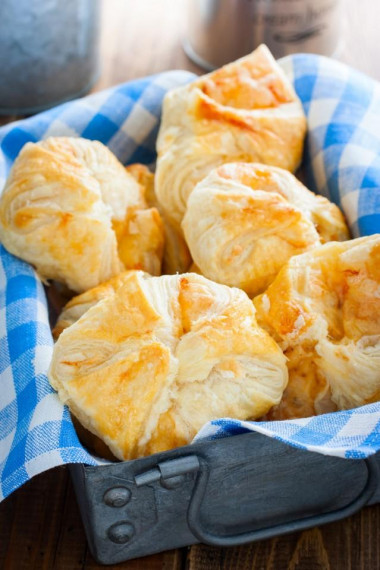
Bake envelopes with ham and cheese until golden brown. Remove the finished product from the oven and be sure to let it cool down a little for an even distribution of moisture.
Caloric content of the products possible in the composition of the dish
- Chicken egg - 157 kcal/100g
- Egg white - 45 kcal/100g
- Egg powder - 542 kcal/100g
- Egg yolk - 352 kcal/100g
- Ostrich egg - 118 kcal/100g
- Dutch cheese - 352 kcal/100g
- Swiss cheese - 335 kcal/100g
- Russian cheese - 366 kcal/100g
- Kostroma cheese - 345 kcal/100g
- Yaroslavsky cheese - 361 kcal/100g
- Altai cheese 50% fat content - 356 kcal/100g
- Soviet cheese - 400 kcal/100g
- Cheese "steppe" - 362 kcal/100g
- Uglich cheese - 347 kcal/100g
- Poshekhonsky cheese - 350 kcal/100g
- Lambert cheese - 377 kcal/100g
- Appnzeller cheese with 50% fat content - 400 kcal/100g
- Chester cheese with 50% fat content - 363 kcal/100g
- Edamer cheese with 40% fat content - 340 kcal/100g
- Cheese with mushrooms of 50% fat content - 395 kcal/100g
- Emmental cheese with 45% fat content - 420 kcal/100g
- Gouda cheese with 45% fat content - 356 kcal/100g
- Aiadeus cheese - 364 kcal/100g
- Dom blanc cheese (semi-hard) - 360 kcal/100g
- Lo spalmino cheese - 61 kcal/100g
- Cheese "etorki" (sheep, hard) - 401 kcal/100g
- White cheese - 100 kcal/100g
- Fat yellow cheese - 260 kcal/100g
- Altai cheese - 355 kcal/100g
- Kaunas cheese - 355 kcal/100g
- Latvian cheese - 316 kcal/100g
- Limburger cheese - 327 kcal/100g
- Lithuanian cheese - 250 kcal/100g
- Lake cheese - 350 kcal/100g
- Gruyere cheese - 396 kcal/100g
- Puff pastry - 400 kcal/100g
- Puff pastry, unleavened - 337 kcal/100g
- Ham - 270 kcal/100g
- Beef ham - 133 kcal/100g
- Boiled ham - 282 kcal/100g
- Raw ham - 270 kcal/100g
- Ham sausage - 242 kcal/100g

